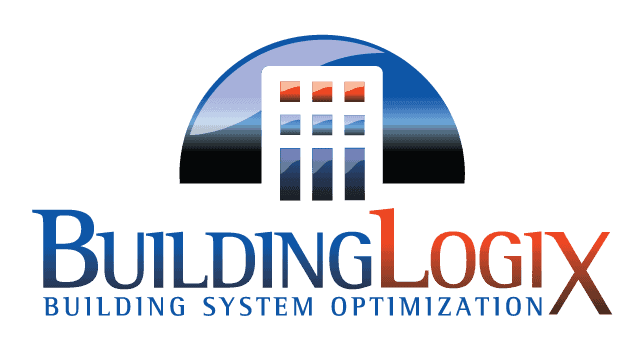 https://buildinglogix.net/wp-content/uploads/2024/07/Side-view-of-an-empty-hall-in-the-modern-office-building.jpg
1250
2000
John Halcomb
https://buildinglogix.net/wp-content/uploads/2024/02/Building-Logix-Logo.png
John Halcomb2024-07-08 10:11:442024-07-26 11:53:42Why Your Business Needs Indoor Air Quality Monitoring
https://buildinglogix.net/wp-content/uploads/2024/07/Side-view-of-an-empty-hall-in-the-modern-office-building.jpg
1250
2000
John Halcomb
https://buildinglogix.net/wp-content/uploads/2024/02/Building-Logix-Logo.png
John Halcomb2024-07-08 10:11:442024-07-26 11:53:42Why Your Business Needs Indoor Air Quality MonitoringWhy Your Business Should Care About Improving Indoor Air Quality
Attracting and retaining young talent is a top priority for any company. In today’s competitive hiring environment, standing out to potential employees can be challenging. While good starting salaries and quality benefits are effective, other elements like indoor air quality (IAQ) matter to younger generations. A recent study found that 4 in 5 respondents between the ages of 18–34 were concerned about IAQ in the workplace. Here are some tips for improving IAQ and how to monitor the levels in your facility.
What Is Indoor Air Quality?
People spend the majority of their time indoors, which means the quality of air in the buildings they occupy plays an important role in their short- and long-term health. IAQ measures the air quality in and around structures. Knowing what their IAQ is allows businesses to understand the common pollutants that occupy their facility and take measures to reduce the health effects stemming from:
- Fuel-burning applications
- Tobacco products
- Excess moisture
- Central heating and cooling systems
- Cleaning and maintenance products
- Building materials
What Are the Health Effects of Poor Indoor Air Quality?
Employees working in building with poor IAQ can experience various health benefits, including:
Short-Term Effects
Some pollutants can cause an immediate impact on an individual’s symptoms like headaches, dizziness, fatigue, and irritation of the eyes, nose, and throat. A person’s age and current medical conditions play a role in how quickly they experience a reaction.
Long-Term Effects
Some pollutants don’t cause an immediate reaction but manifest as major issues after years of repeated exposure. If not addressed, people can experience long term health effects stemming from harmful chemicals in a building’s environment.
How to Improve Indoor Air Quality
Your employees are spending the majority of their week in your facility, so it’s important that you take the necessary steps to improve the air in their indoor environment.
Even well-run commercial buildings can experience indoor air pollution problems that put the health and safety of occupants at risk. Here are some tips for improving the IAQ in your facility:
Maintain HVAC Systems
Your building’s HVAC systems are critical to the overall air quality. Proper outside air mixing prevents unwanted pollutants from spreading to other areas. Also, properly functioning exhaust fans and air filters increase IAQ by creating a path for polluted air to exit.
Regularly inspecting your equipment and verifying its operating efficiency are important tasks. Make sure your team prevents blockages of vents, return air intakes, exhaust fan discharge, and outside air intake. Also, regular changing of air filters supports proper system airflow and removes unwanted particulate matter, creating a healthier environment overall.
Install Indoor Air Quality Monitoring Devices in Your Facility
We identify some pollutants just by using our senses, but some are much more difficult to detect. Installing CO2 and/or IAQ monitoring devices throughout your building helps pinpoint the presence of unwanted pollutants by measuring the air and providing real-time data. Using innovative tools allows your staff to focus their solutions on the rooms and equipment that need it the most.
Use Portable Air Purifiers
Whether it’s off-gassing from new equipment, cleaning chemicals, pesticides, or other elements, it’s nearly impossible to prevent pollutants from entering your building. However, using the right tools can keep them from impacting the health of occupants.
Portable air purifiers work by moving the air in a room and catching pollutants as they enter the unit’s folder. Placing these in strategic locations delivers a healthier environment for everyone working in your facility especially after a carpet or flooring change or the installation of new furniture.
Keep Humidity Levels at Target Levels
Mold, pests, and other biological pollutants thrive and multiply in warm, humid conditions. Keeping your building’s humidity levels at design conditions prevents the growth of these problem-causing organisms and reduces the risk of long-term health complications.
Did You Know That a Healthy Indoor Air Quality Helps Businesses Enhance Sustainability?
Environment, social, and governance measures help companies prove that they’re making an effort to reduce their impact on the environment. Learn more about how IAQ plays into this and why it’s important to take it seriously by reading our latest blog.
Enhance Your Company’s Indoor Air Quality With BuildingLogiX
One of the biggest problems companies face when trying to improve their indoor air quality monitoring is that their staff lacks the time, resources and knowledge to regularly inspect equipment. Shrinking head counts and reduced budgets have forced some maintenance teams to adopt a reactive approach to their building automation system management. This means they wait until equipment breaks before repairing it, which can cause unwanted pollutants to infiltrate a facility.
Ensuring your employees are operating in a healthy environment requires a proactive approach to BAS maintenance. The Connected Building Services (CBS) offered by BuildingLogix enables maintenance teams to track air quality, ventilation rates, and equipment performance and make minor adjustments that enhance efficiency. CBS helps improve IAQ by providing the following tools:
Fault Detection and Diagnostics (FDD)
Traditional maintenance methods require technicians to troubleshoot various components before locating the actual problem. This is a time-consuming process that keeps them from working on higher-value responsibilities.
FDD enables your staff to take a protective approach to facility maintenance by monitoring BAS equipment to detect, isolate, identify, and evaluate issues when they occur. Leveraging our tools allows your team to address minor problems before they develop into major issues.
Data Visualization
Your BAS generates significant amounts of data, but being able to gather and translate it into actionable information is where your business witnesses the benefits of CBS. Our data visualization tools use custom data dashboards and use graphs, charts, and other such things to help your team understand how efficiently equipment is operating.
We work with you to customize the data that each employee receives and help you perform data analysis that lets your staff enhance operations and create a healthy working environment.
Improve Indoor Air Quality With BuildingLogiX
BuildingLogiX has been helping companies across the country improve their indoor air quality since 2006. Our experts take pride in helping clients reduce utilize costs and maximize the useful life of their equipment. Contact BuildingLogiX today to learn more about our solutions.




